The old and the new
Ladakh - Little Tibet! Good to be back in Leh with its friendly greeting of "Jullay!".
Here's a link to some of our Ladakh photos for sale on this site.
Or even Jullay, jullay, jullay. As many jullays as you like, a delightful word meaning hello, goodbye, please etc. Leh is changing rapidly with the advent of Indian tourism. Ladakh has been the backdrop of several Bollywood films and Indian tourists are here mainly to see the locations. Another group are here to motorcycle the empty roads and the wild areas including Pangong Tso. They're able to follow the roads that get near to the Chinese border; we alas, as foreigners, can't get permits to go quite so close.
The change we see in Leh is a huge increase in the number of hotels, it almost seems that everyone who owns a house in the lovely Leh valley has turned it into a guest house or something much larger.
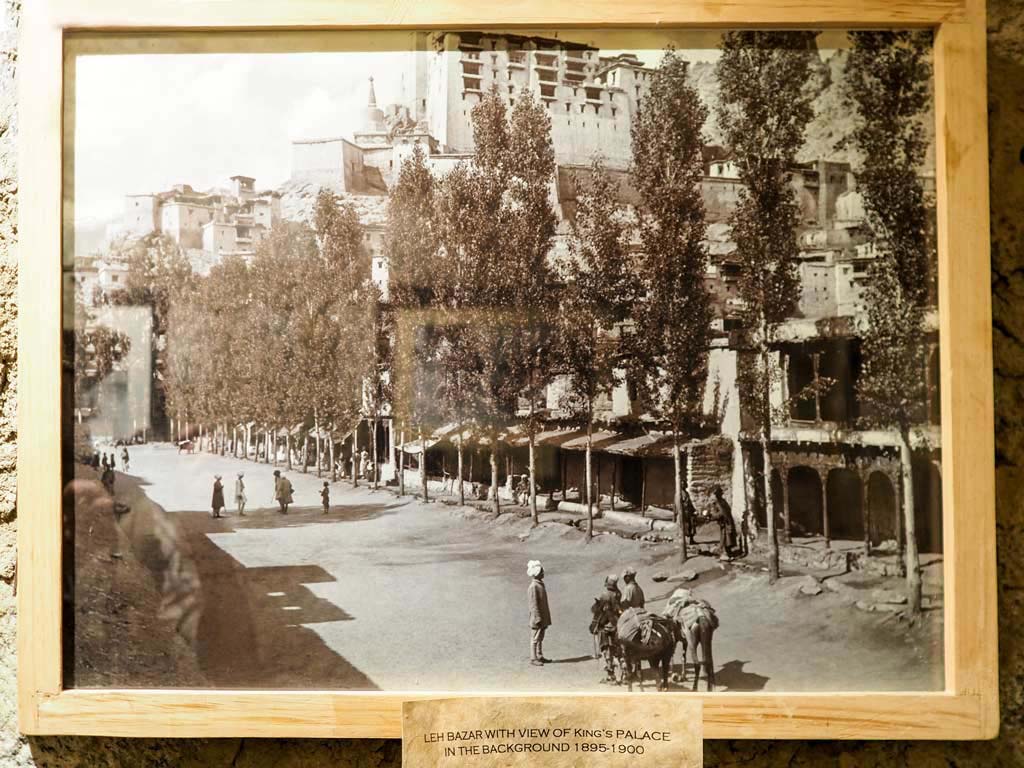
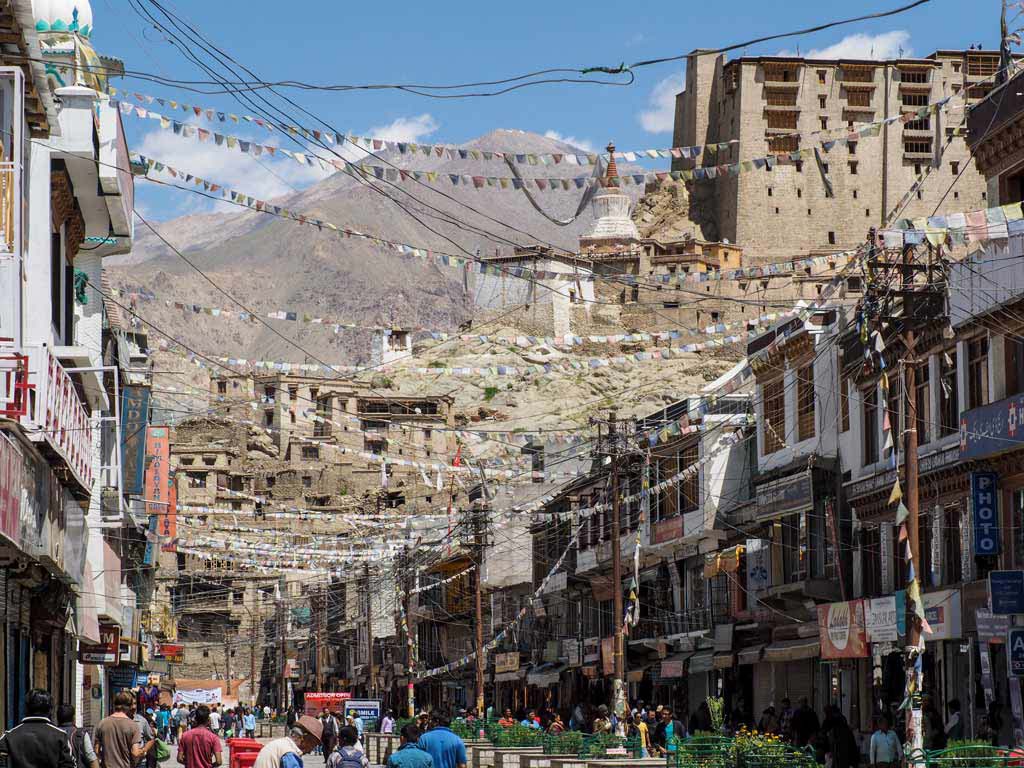
Ladakh is sandwiched between Kashmir and Tibet and India has had border wars with Pakistan and China in the last 50 years. Ladakh itself is mostly Buddhist with a Muslim population in the towns of Leh and Padum.
The Muslim Kashmiri presence is starting to dominate the economy and new cultural initiatives have a political edge to them. A new cultural centre with cafe, library, bookshop and handicrafts has a strong Kashmiri perspective.
There are tensions which are struggling to get resolved. The new Central Asian museum behind the delightful old Muslim bakeries has the same slant but gives a broader and very informative history of Leh's part in the Silk Road. It only opened in May and this was our first chance to see inside.

The old mosque has been demolished, a new larger one is under construction and the old market street has been paved and is traffic free. The main gain is cleaner air for the ladies of Leh who sit on the pavement selling vegetables.
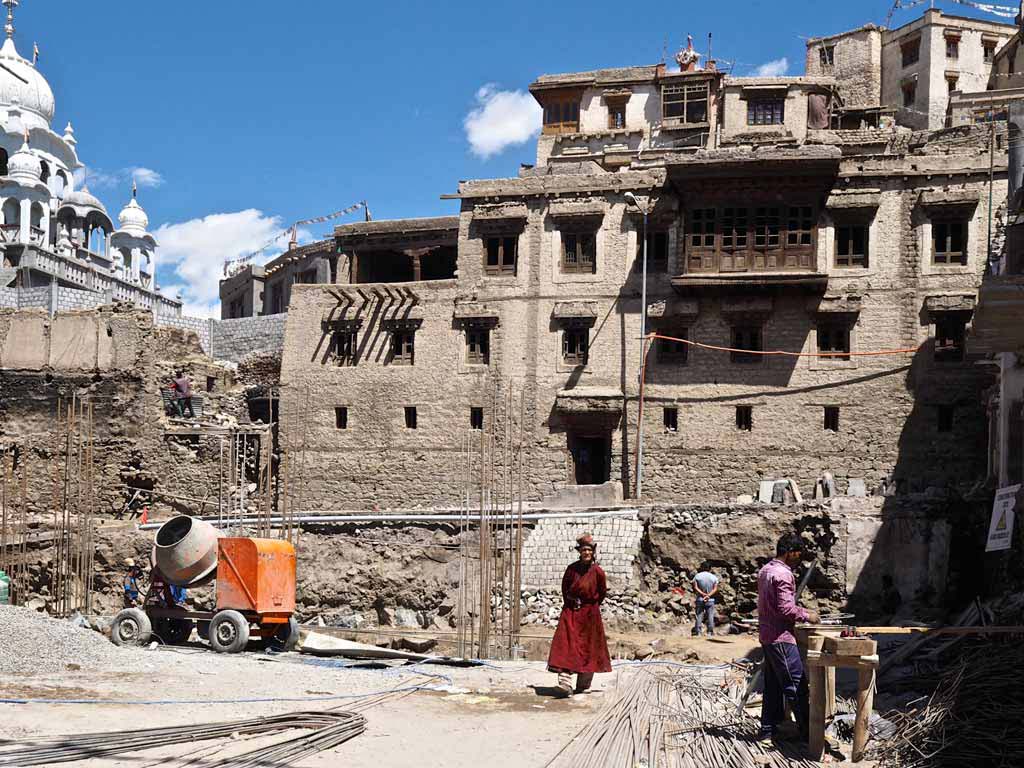
Leh is dusty and the increased traffic can make for poor air quality downtown. The dust is everywhere. Ladakh is one if the driest places on earth - so bring moisturiser and use plenty of sun cream, the air is thin and the sun is very strong.
None of this might sound too enticing but there's a light friendly energy and plenty to do; the old Royal Palace which forms a backdrop to all views of the town is a smaller version of Lhasa's Potala and a there's a genuine sense of being in a Central Asian bazaar town, snow clad 6000 metre peaks of the Stok range dominate the horizon.
Within a few miles there are a dozen Buddhist monasteries, some a thousand years old, the Dalai Lama has a summer residence here in Choglomsar, the centre of the Tibetan community.
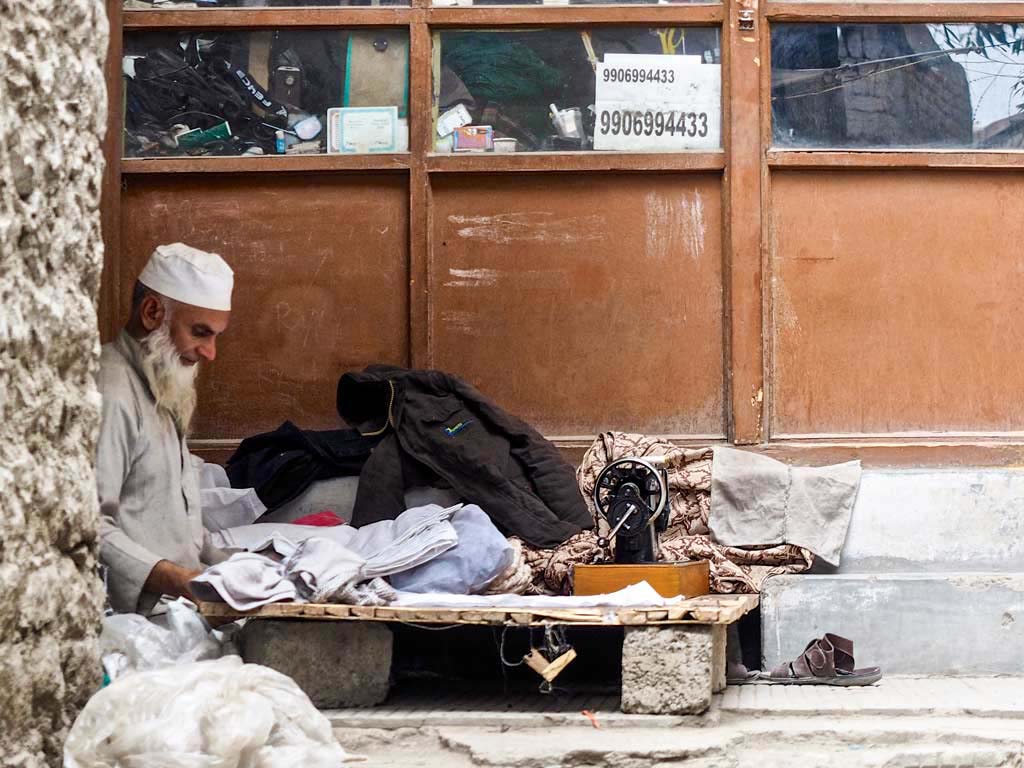
There are two roads out of Leh - south to Manali and west to Kargil and Kashmir. On our second day we drive out west to see 12th century Buddhist cave paintings at Saspol. Last year we spoke to archeologists who were documenting the pigments that had been used; today we can see the paintings more clearly.
There are four caves in the hillside, originally for meditation, slightly crumbling but the paintings are superb. Some of the pigment has faded, black and red colours have survived the best and give a faded outlined effect that has a delicate purity. There are traces of silver on the head of the Bodhisattva Avalokiteshvara.

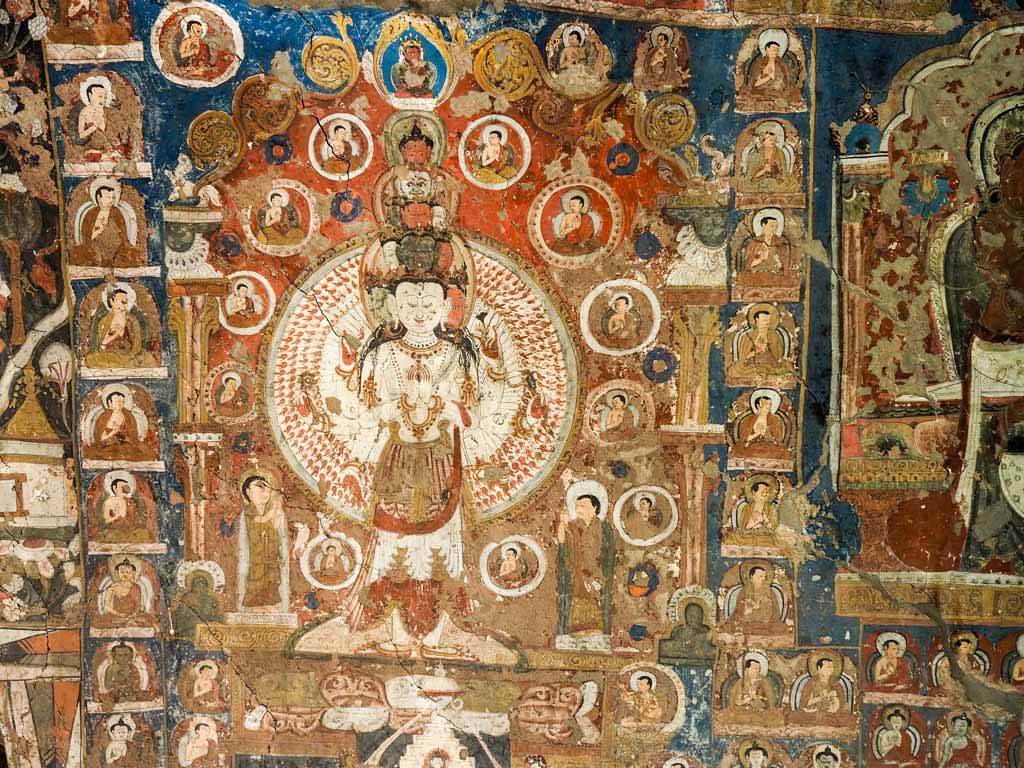
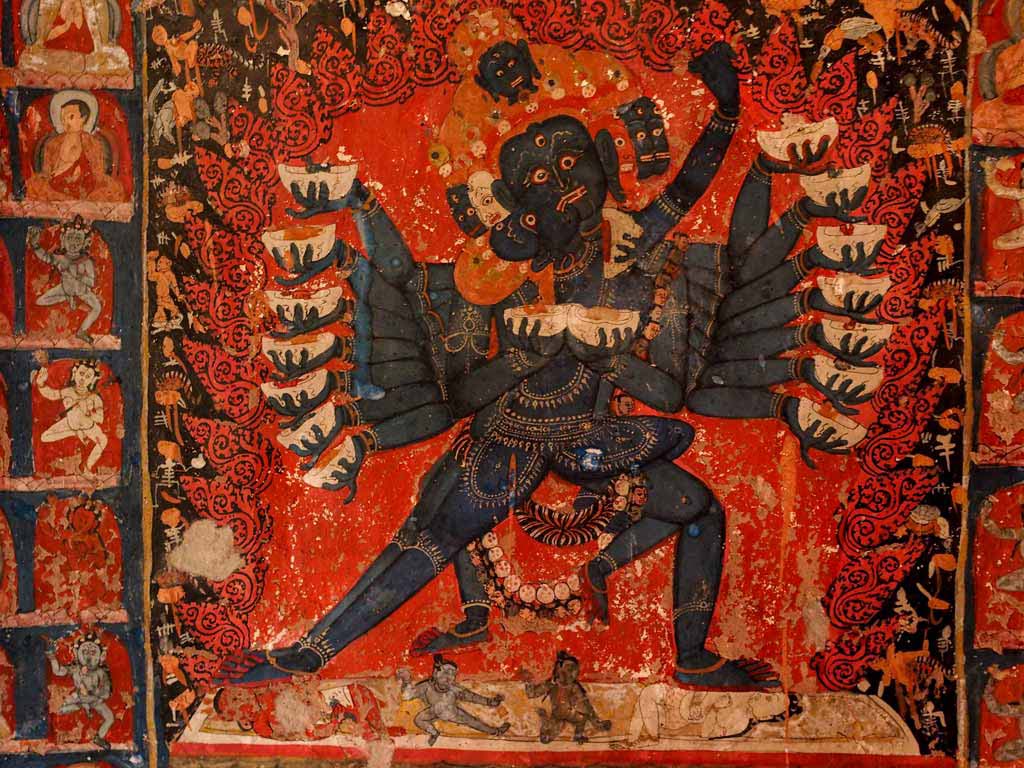

We cross over onto the south bank of the Indus River and drive up to the small village of Mangyu. There's a tricky moment negotiating the narrow rough track around a large threshing machine which the villages have rented for the barley harvest.
More dust but harvest is a jolly time and much chang, home brewed barley beer, is drunk. People often leave their jobs for two weeks to go back home and help the harvest.
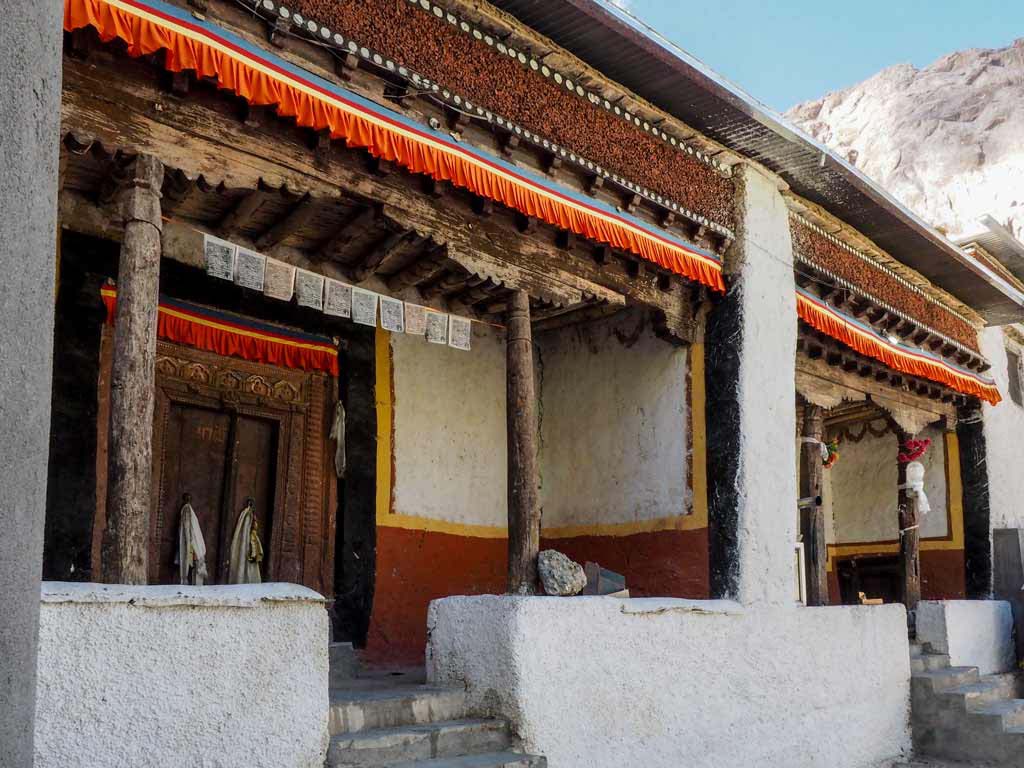
The village is a delight, narrow lanes winding up the hillside which is dotted with white painted stupas, the reliquary buildings of assorted sizes that characterise the Buddhist landscape.
It's quiet, everyone us at the harvest, but we find an old man with the keys to the monastery buildings. Mangyu is close to the famous monastery of Alchi and was built shortly after, and on a similar but more modest scale, by the same Kashmiri artists.
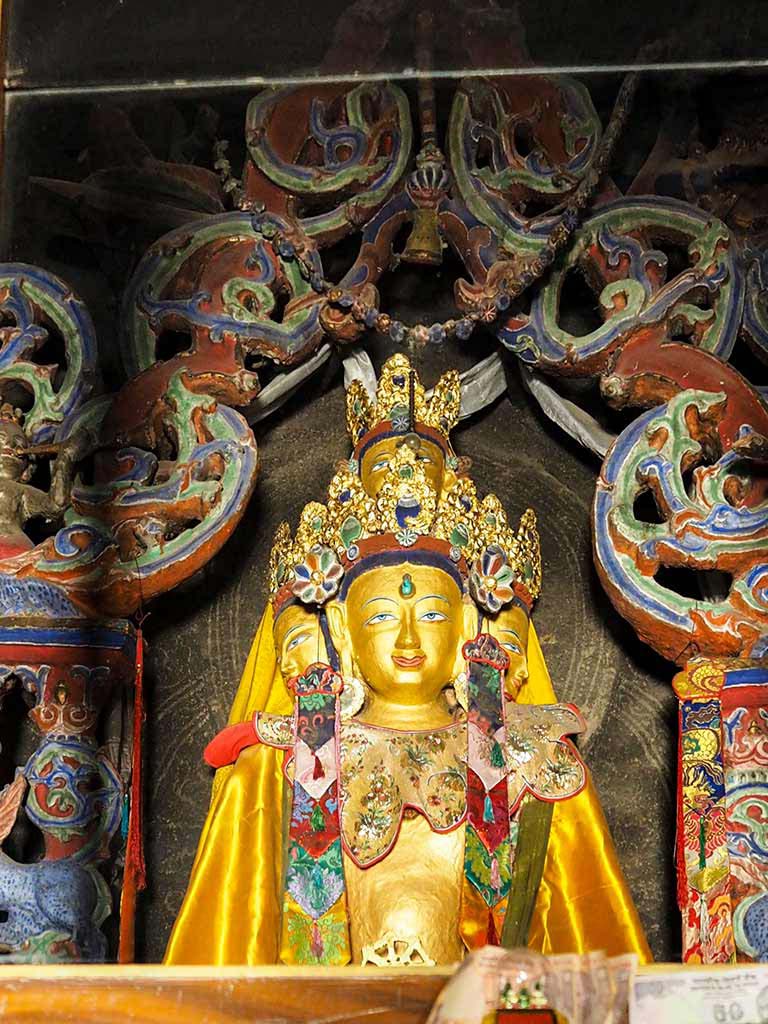
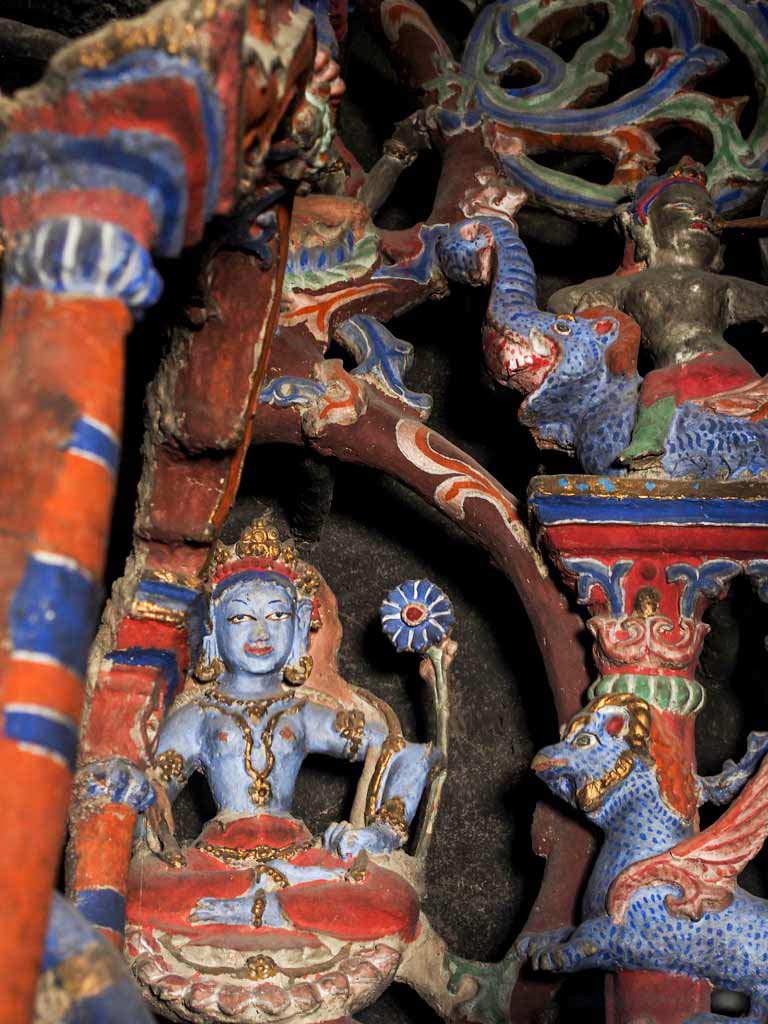
Wonderful old paintings on the walls depict various Buddhist figures and complex mandala paintings cover entire walls, used for meditation and representing the Buddhist realms. Faded but discernible in the dim light.
Most dramatic are the two 3 metre standing figures of the bodhisattvas of wisdom and compassion in rooms no bigger than the statues themselves, entered by doors you almost have to crawl through.
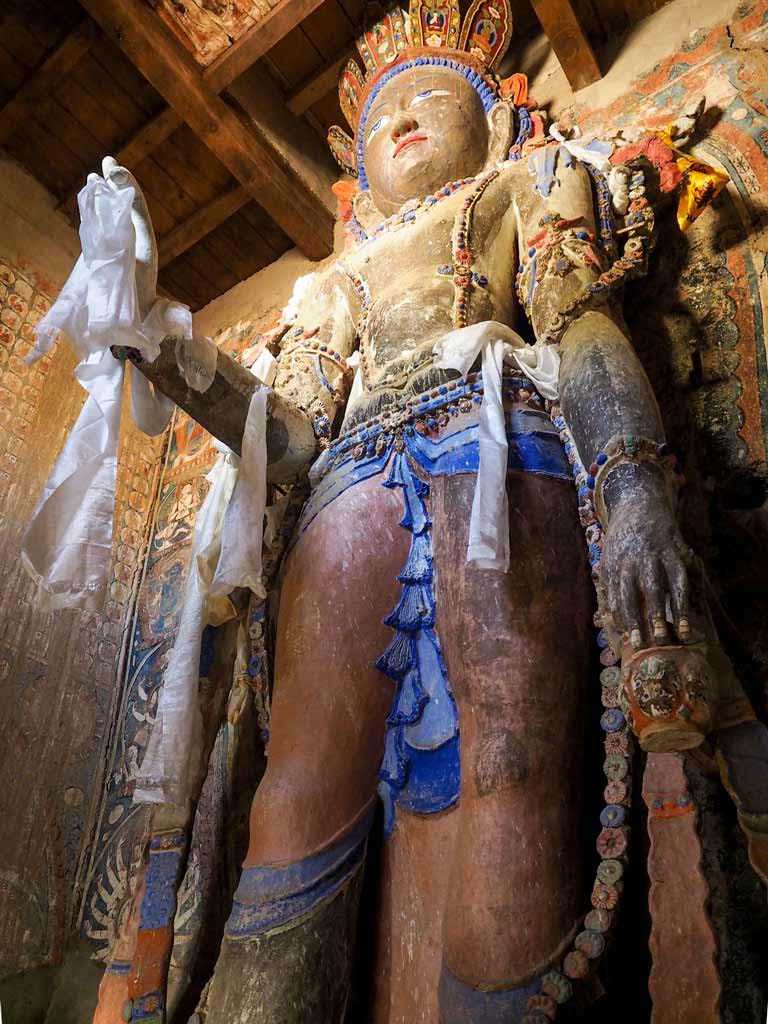
No one seems to come here, nearby Alchi gets all the visitors, and it's only by chance that I heard of it last year when Stanzin and the archeologist started talking about it. The paintings at Alchi are unsurpassable but too many visitors spoil the atmosphere; in smaller places like Mangyu and Saspol the experience is more deeply felt.
We drive back to Leh past the beautiful Basgo ruins and old monastery buildings on the hillside above the road. Although I love going to Basgo it's not long since we were there and the afternoon is rolling along and it's time to head back to Leh.
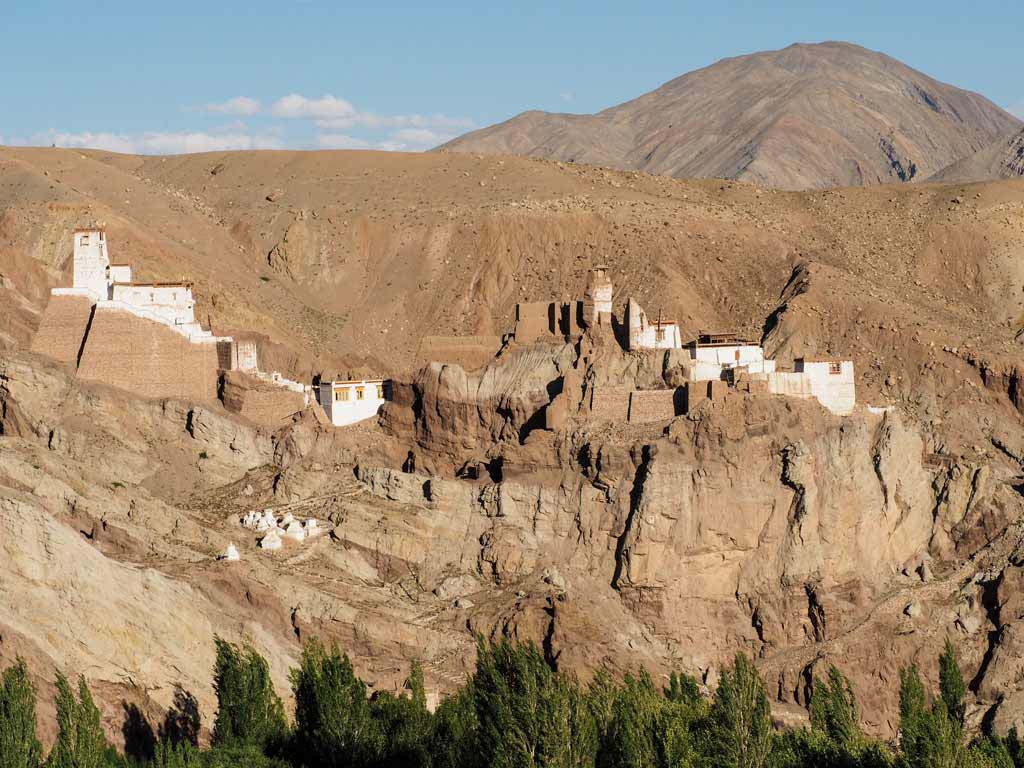
Read more about Buddhist monasteries and trekking in Ladakh and Zanskar.

Thanks William, Only just seen your post – thanks for leaving a comment. Here’s a link to some other blogs about Ladakh.
awesome work!